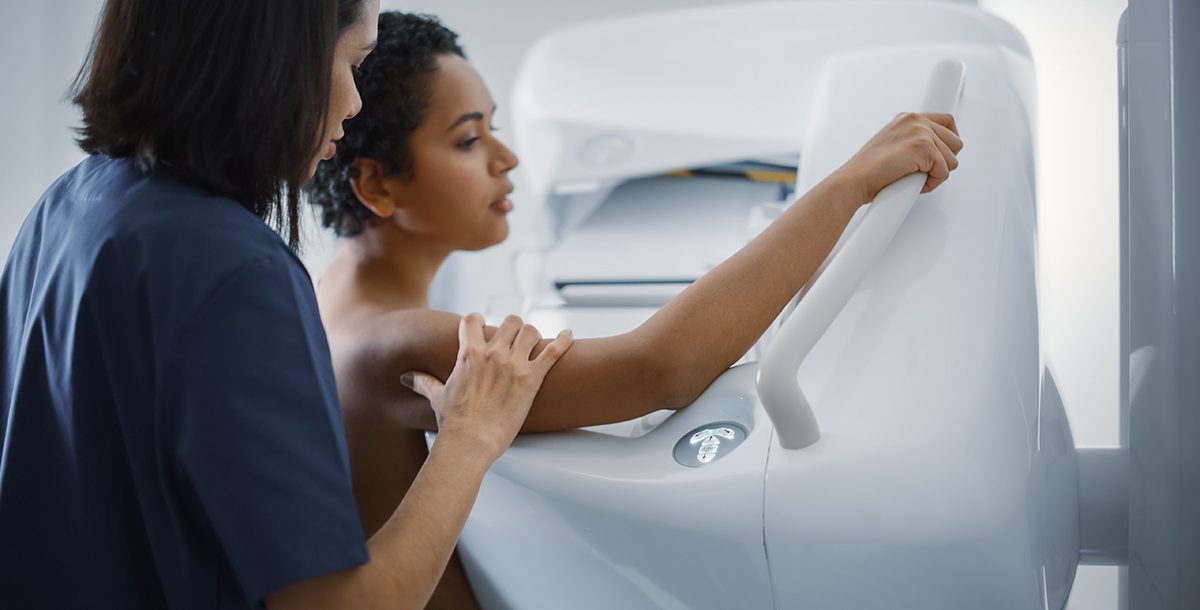A mammogram is one of the most important screenings that a woman needs to schedule. Different medical authorities issue screening guidelines for mammograms, and they may change or slightly vary over time. So how often should you get a mammogram, and what are the correct guidelines for when to start getting them? Here are answers to these questions and more to help you stay on track.
What is a mammogram?
A mammogram is an X-ray picture of your breasts. The images can detect early signs of breast cancer. A mammogram can detect lumps before you feel them, as well as identify if you have dense breast tissue, which raises your risk of developing breast cancer at some point. A mammogram requires a very small dose of radiation, but the risk of harm from this exposure is extremely low. Early detection of breast cancer can save your life.
Do mammograms hurt?
Not all women will feel pain during a mammogram. Most will feel some discomfort, while some may feel nothing at all. If you do feel pain or discomfort during a mammogram, it will occur during the X-ray process of the screening as a result of the pressure against your breasts. This is normal and should only last for a few minutes.
Pain level may vary with each mammogram and depends on:
- the size of your breasts
- when you receive the exam during your menstrual cycle
- various positioning during the screening
How long does a mammogram take?
Mammograms are relatively quick procedures and only take between 15 and 30 minutes to do. Each breast is compressed for about 20 to 30 seconds, which is the part of the exam where women are most likely to feel discomfort. The rest of the exam time is used to review the images to ensure they don’t need to be retaken.
How to prepare for a mammogram
As mentioned, some women feel pain or discomfort during their mammogram. If you have a history of this or would rather avoid it out of caution, you can take an over-the-counter pain medication such as aspirin or ibuprofen if your health care provider determines it is safe for you to do so.
In order to minimize the chance of pain during the exam and improve your chances for better images, schedule your mammogram when your breasts are least likely to be swollen or tender due to your menstrual cycle. Avoiding the week before your period is likely to begin is best.
On the day of your exam, don’t use deodorant, antiperspirant, lotions, powders or creams under your arms or on or under your breasts. These substances can sometimes appear as white spots on the X-ray images, which can make it more difficult for your doctor to interpret the results. Additionally, consider wearing a skirt or pants to your mammogram – you’ll have to remove your shirt and bra for the exam, which be easier than removing a dress or other one-piece clothing item.
When should you get a mammogram?
It’s recommended that women at average risk and are ages 40 to 44 years old should begin scheduling mammograms. Even if you do not have any symptoms and breast cancer does not run in your family, you should still start screening mammograms for the disease.
You can generally expect to have a mammogram every one to two years. However, it’s highly advisable that women ages 45 to 54 have a mammogram every year.
If you are younger than 40, regular screenings are not recommended. However, stay aware of any changes to the look and feel of your breasts. While the American Cancer Society no longer recommends routine breast self-exams as necessary, you may want to perform them periodically to check for any changes.
How often should I get a mammogram after 60?
When you reach the age of 55 and older, you can switch from annual mammograms to having one every two years. However, you and your primary care provider may feel more comfortable with an annual screening if you are at risk. You should continue to have mammograms for the rest of your life as long as you’re in good health and expected to live 10 years or longer.
Some doctors may recommend that you continue to get a mammogram until you reach the age of 75. However, mammography guidelines for breast cancer survivors 75 and older have shifted slightly:
- Breast cancer survivors who are 75 and older do not need a mammogram if expected to live less than five years.
- Breast cancer survivors who are 75 and older can consider discontinuing mammograms if they are expected to live for five to 10 years.
- If a breast cancer survivor 75 years and older is expected to live more than 10 years, she should continue to have mammography screenings.
When should I get a mammogram if I have a family history of breast cancer?
The risks for women developing breast cancer go beyond family history. However, if you’re younger than age 40 and have a history of breast cancer in your immediate family (sister, mother or even your daughter), ask your doctor if having a mammogram is advisable. Some doctors may even advise you to start your mammography screening at age 30 if there’s a history of cancer in your family. You may be at risk for developing breast cancer for the following reasons:
- You began menstruating before age 12.
- You have not ever given birth to a child.
- You had your first child at age 30 or older.
- You have had radiation treatment to the chest.
- You have a previous diagnosis of breast cancer.
- You went through menopause after the age of 55.
Can I get a mammogram if I’ve been vaccinated for COVID-19?
If you receive a vaccination for COVID-19, wait four to six weeks before having a mammogram. That’s because your underarm lymph nodes may become temporarily enlarged slightly in the same arm that you received your vaccination. An enlarged lymph node can interfere with an accurate mammography reading.
When to see your doctor
Mammograms can be low-cost, free or part of your health insurance’s annual check-up plan that does not require any out-of-pocket costs. The cost should not cause you to delay the screening.
If you notice any bruising on your breasts or still feel sore a full day following your mammogram, let your doctor know. While they’re not cause for alarm, it’s best to follow up with your provider. If your nurse or X-ray technician sees anything abnormal, they may recommend a follow-up mammogram, breast sonogram or biopsy, depending on the type of irregularity found.
Speak with your primary care provider to learn more about when you should start breast cancer screenings or to schedule one.





